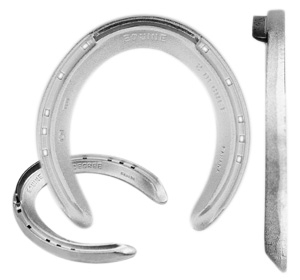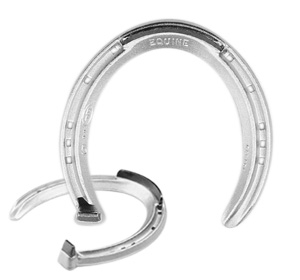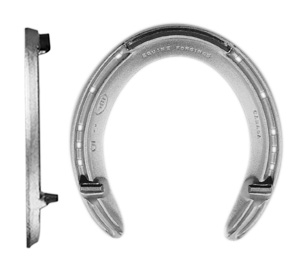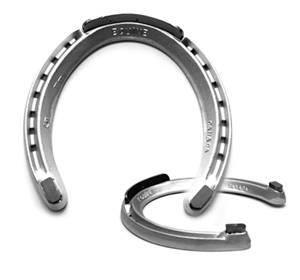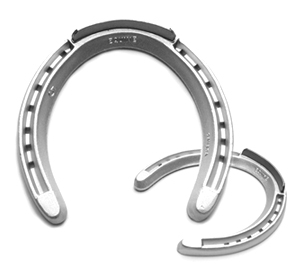Recently there has been much debate on why racehorses break down. It is a terrible tragedy in any situation, whether it occurs in a high profile event such as the Kentucky Derby (where Eight Belles had to be euthanized on the track) or in a low level claiming race that only a few people witness.
Many tracks across the country have changed their racing surface from dirt to a synthetic material, which is supposed to provide more cushion for the horses racing on it. There are several types of synthetic material being used and it is a matter of opinion as to which one is the best.
The biggest controversy, however, seems to be the shoes that racehorses wear. There have been several studies done as to the effects of toe grabs (an extension on the toe of the shoe similar to a wide cleat) and their relation to injuries that horses suffer.
Racehorse plates, or shoes, are made of aluminum. These shoes come in many different styles: level grip, low toe, regular front, queen's plate, wedge heels caulks, and block heels. The list goes on and on.
The theory is that the toe grab is what causes injuries to these athletes. New rules are being enacted at various tracks about the length of grabs that can now be used.
I have always had another theory as to the cause of some breakdowns.
In addition to conditioning my horses, I ride them myself in the morning workouts and attend to all their farrier (shoeing) needs. When a shoe is placed on a hoof, that hoof must be level. All too often, a horse comes to me with newly shod (shoes put on), visibly uneven feet.
The most common problem I see is that one side of the heel is higher than the other. I have seen some horses with as much as a quarter of an inch difference on their heels. Other problems are heels that have been cut too short, while leaving the toe too long, or one hoof being considerably longer than the rest.
When one side of a heel is longer than the other, it puts considerable stress on the joints and attaching ligaments. Imagine yourself having to compete with one side of your heel being higher than the other. If a person were to stand with the outside of his foot elevated, he would feel undue stress on his knee. Now, if he stands with the inside of his heel raised, even slightly, the strain is put on the ankle.
The other most common problem I've witnessed is a horse's toes being left too long. This is no different than a person wearing clown-like shoes that are too big and long around the toes. A long toe stresses the deep flexor tendon that runs down the back of the leg. This tendon is the equivalent of our Achilles tendon. There is an old myth that a long toe will lengthen a horse's stride, when in actuality, all it does is cause a horse to lift his feet higher than normal to prevent tripping and actually shortens the horse's stride.
The angle of a horses' hooves needs to match the natural angle of his shoulder. Too often this is not done. I would like to see studies on injuries horses suffer based on how they were shod. Moreover, what joint or tendon was affected in relation to whether or not a horse's heels were even or toes were excessively long.
Is it really the track surface, the type of shoes, or the way the horse is shod that is causing the injuries?
Various types of horse shoes:
[Editor's Note] For an interesting read on lameness in horses, check out Adams' Lameness in Horses by Ted S. Stashak and Robert Adams.
